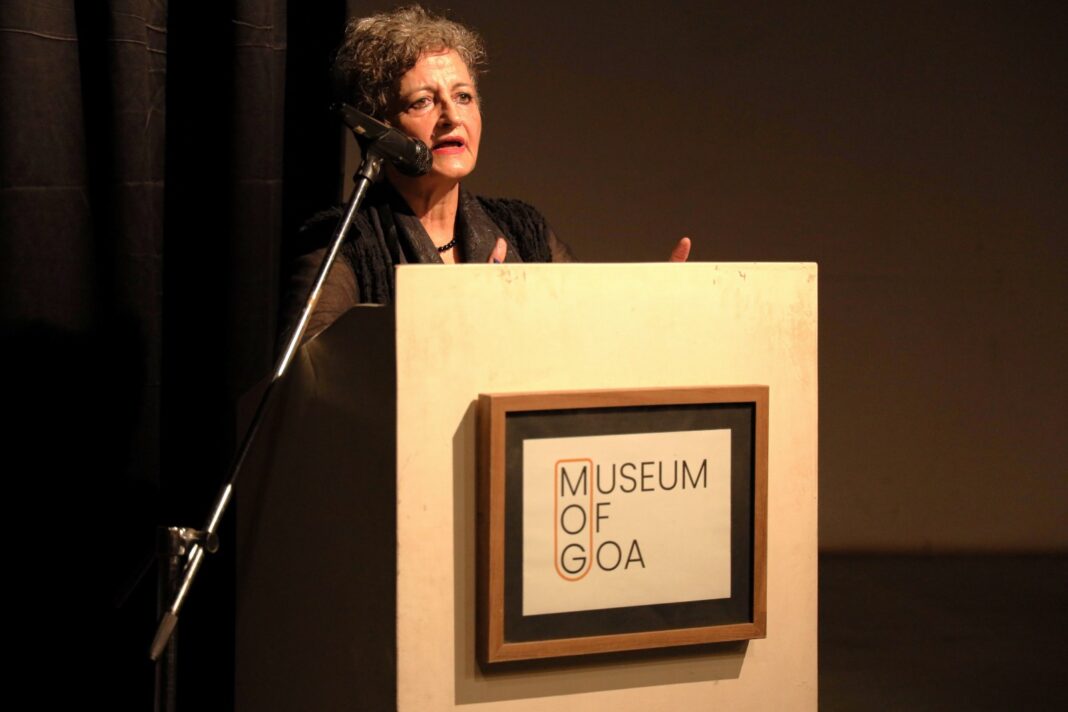Contemporary India Experienced the Golden Age of Journalism After the Emergency: Seema Mustafa
~ Veteran journalist and president of the Editors Guild of India (EGI) Seema Mustafa also spoke about the simultaneous erosion of democratic values and the media with the introduction of the television rating point (TRP) system to gauge their popularity.
Saligao : Contemporary India experienced the Golden Age of journalism after the Emergency ended in the late 1970s, said veteran journalist and president of the Editors Guild of India (EGI) Seema Mustafa at the recent MOG Sundays talk at the Museum of Goa, Pilerne.
The first woman president of EGI, Mustafa’s career in journalism spans over four decades, and she is renowned for her reportage out of conflict zones like Beirut and for working with leading Indian publications like The Indian Express and The Telegraph. She also served as National Affairs Editor at News X.
During the talk, titled ‘Seema Mustafa on Media and Democracy’, she stated that during this period, journalists were highly aware of their rights and there was a sense of unity among them where freedom of the press was fiercely guarded.
“There was a new drive and momentum to write. Journalists were reporting from the villages, districts, reporting on the plights of the marginalised communities. Investigative journalism was being conducted in full swing – this era of journalism highlighted why we journalists took up the profession in the first place,” said Mustafa, who is also an author and founder-editor of the independent online news daily The Citizen.
Mustafa highlighted the link between media and democracy. What eventually followed India’s journalistic zenith was the gradual but consistent erosion of democratic values, which consequently led to the erosion of the fourth pillar of democracy – the media.
Mustafa stated: “In the late 1980s and early 1990s, with the widespread introduction of television in people’s homes, the focus was on television rating points (TRP) and creating stars in the media, and the focus shifted away from reporting from the poor and those in the rural areas. This became another form of censorship, which continues today”.
However, Mustafa concluded by expressing that there is still hope for real journalism to flourish, citing alternative modes of publication like digital platforms as spaces for stories to be shared without hardcore censorship, a few select news entities that still value the ethics that are foundational to journalism, and an increasingly informed public demanding for a free media.




